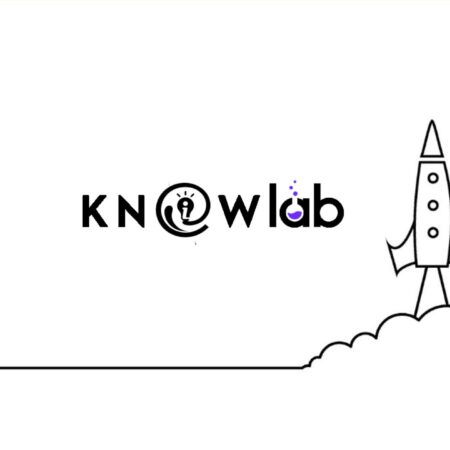 The only way to create a sustainable and effective content strategy is to deliver the best of value to your target audience.
The only way to create a sustainable and effective content strategy is to deliver the best of value to your target audience.
You may have done a ton of inbound marketing on your content through social media, but the only way to gain readers who come back is by — I can’t stress this point enough — delivering pure value.
So, How do you write engaging content?
After intense research, studying and implementation, I have found twenty-one brilliant tricks to write engaging content.
I have condensed them down to 10 tips with high effectiveness for you to learn.
Also Read: Blogging and Content Writing Tools For Your Every Need
Here are 10 Tips to write engaging content:
1. Write a Great Hook
Write a great Hook. The Hook also called the Lead is the first few sentences of your content. The purpose of the hook is to capture your reader’s attention and motivate them to read your blog post.
Often, writing the hook is a very difficult part of the content writer’s job. The infamous white-page-of-dead — is what I like to call it — formally known as the creative block, plagues them.
To break out of this problem, here are 3 tried and tested methods:
Fun fact
Fun fact. It quickly captures the reader’s attention, given the fact is relevant to their query and is surprising enough to the reader.
A fun fact builds your authenticity as it shows that you have deep knowledge about the industry.
The reader will be more certain that they want to read your content through.
Personal Anecdote
Personal Anecdotes. A little show of vulnerability goes a long way; your audience feels more connected to the content as they face the same challenges.
Talk about why problems you faced, think about what problems your target audience faces, and talk about how you have solved them.
Personal Anecdotes creates an emotional link with your reader and this when paired with consistency and diverse call-to-action will develop reader loyalty.
Quotes
Quotes. If you are just getting started in this industry and you feel a lack of authority within the community, quotes are your friend.
They allow you to leverage the authority and authenticity of the prominent figures of the industry.
If the best of best is saying it, you’d believe, wouldn’t you?
This also shows your target audience that you are delivering value-driven content and slowly — at the snail’s pace, unfortunately — you will grow a following and then the original content you make will build your authority.
2. Cut down the Bulk
Cut down the bulk. Unnecessary words — Also called fluffy words— weigh your content down; these are words that don’t [really] add any value to the conversation.
That above word I put in square braces is an unnecessary word. It doesn’t make the sentence any more or less important if I add ‘really’ or not.
These are words that don’t add any value to the conversation
These are words that don’t really add any value to the conversation
See the point? This isn’t only limited to words, it can sentence or an entire paragraph!
Here’s what you need to do:
Chop off unnecessary stuff
Chop off unnecessary sentences and paragraphs. This includes your introduction, it may contain ranting, which shows a poorly planned lead.
So either condense it or remove them completely.
Chop off fluffy words
Chop off fluffy words. They don’t add any value to the point you are trying to make.
Examples of fluffy words are.
Very, more, like, extremely, mostly, really, generally, basically.
You can use writing tools such as Grammarly or ProWritingAid to help you quickly identify fluffy words.
3. Embrace the white spaces
Embrace the white spaces. Anytime you write long-form content i.e. blog post, LinkedIn post, article; it is important that you space out your content well.
This means keep your paragraphs short with only two to three sentences on average and put ample white space between paragraphs.
This space allows your reader some time to rest their eyes and also prevents them from feeling bombarded with information.
A densely packed content is distracting and revolting to the reader, particularly when they haven’t yet decided whether they want to read your content.
In simple analytical terms, dense content will increase your bounce rate.
You should practice positioning other forms of media within the content piece. Media such as YouTube videos, images, and Podcasts boosts reader engagement.
4. Good vocabulary is more a curse than a gift
A good vocabulary is more a curse than a gift. I prefer using a simple vocabulary style when writing my content; in my practice, I haven’t received a good response on the use of a complex and vocabulary rich style.
Your goal is to get your point across to the reader as clearly as possible; even if you end up using a few extra words.
Avoid the use of unconventional and industry-specific words. When you do, make sure you define those terms immediately so there is no room for confusions.
The last thing you want is for your reader to run for a dictionary because you are driving them away from your site and it is unlikely they will want to become a regular reader.
Positions your content to be clean and easy to understand.
5. Dot your content with other forms of media
Dot your content with other forms of media. Plain text is boring to read. Few content writers can get away with writing a 10,000 – word piece of content and expect the reader to stick around till the end.
Make sure the reader remains engaged with your content from start to end. The best way to do it is to add other forms of content to the mix.
This also helps to space out your content as we discussed earlier.
Media can be as:
- Relevant images (i.e. Instagram posts),
- Video content (i.e. YouTube videos),
- Infographics and,
- Podcasts
Add vibrance to your page is the goal here. Use high-resolution images to make sure your content looks great on any size of the screen.
6. Always include the Call-to-Action
Always include the call-to-action. You should always add a Call-to-Action CTA where you have a product to sell or not. CTAs take reader engagement to the next level.
Tasks for your readers is a great example of CTA, this type of CTAs continues the engagement connection even long after they have left your site!
This is the type of CTA I love to use, however, there are other types of CTAs too such as
Newsletter Sign up
Newsletter Sign up. Newsletters are all the craze, nowadays everyone is writing a newsletter. This gives you the email IDs of your target audience for when you come up with products or services to sell.
Social Media share link
Social Media share link. Ask your readers to share your content on social media such as Facebook, Instagram and Twitter.
7. Give more options
Give more options. This point rides on the previous point about using other forms of media in your blog posts.
Convert your written content into other forms of media such as YouTube videos, Podcasts, Instagram reels or such.
Then add these to your blog post. This gives you reader options to choose from.
Bear with me there.
Maybe they just came back from work and they’d rather watch a video than read your post. They can do that!
Or they might be in a distracting environment like in a subway or a bus and would rather hear a podcast. They can do that too!
Also, from an analytical standpoint, it’s great because it boosts your on-page time — an average YouTube video is 8 mins long, a podcast is 18-20 mins!
8. Sub-headings are important
Sub-headings are important. How-to and other list-style content is all the craze now, thanks to the Google featured snippet.
When you segregate your content with sub-headings, it follows the same psychology — explained below — of the How-to style content.
Readers have the habit of scrolling — at least I do — through the content before deciding whether they want to read it.
It helps them gauge the reading time, realise relevance to their inquiry, skim through the headings and check the visual appeal of the content.
BONUS: Maintain a decent colour pallet throughout your article with images, coloured texts and infographics to increase the visual appeal.
9. Use your unique voice
Use your unique voice. The way you write your content should be a clear print of you. This means to write in a language that would seem like having a natural conversation with you.
The way you write your content should be a clear print of you.
Your unique style of writing is what will stick with your target audience, It’s how you will create authenticity and develop authority in the industry.
When you write, imagine the reader is with you. How would a conversation between you two go? Unless you are authentic, you aren’t going anywhere.
10. The Secret Sauce
The Secret Sauce. It’s human nature to want to reject the ideas and beliefs of others around us; unless of course, they are mentally interested in listening to you.
I think we all will resonate with this expression.
‘You are WRONG!’ but if a famous person says it ‘IT’s SO TRUE!’
This is a lack of authority, and the trick to resolving this issue is simple.
IT’S HARD PROOF.
Like I said in an earlier point, use quotes, use verifiable sources, prove your point.
There is very little argument left when you have hard proof to back it.
Author: Krityatirtha Paul



